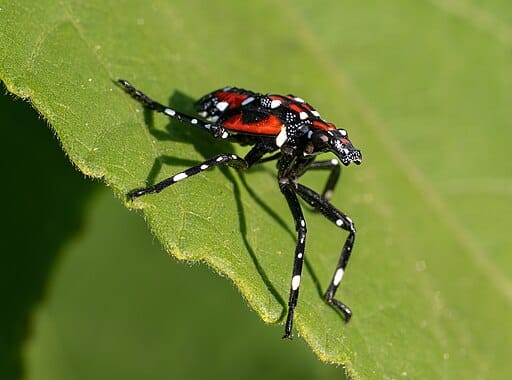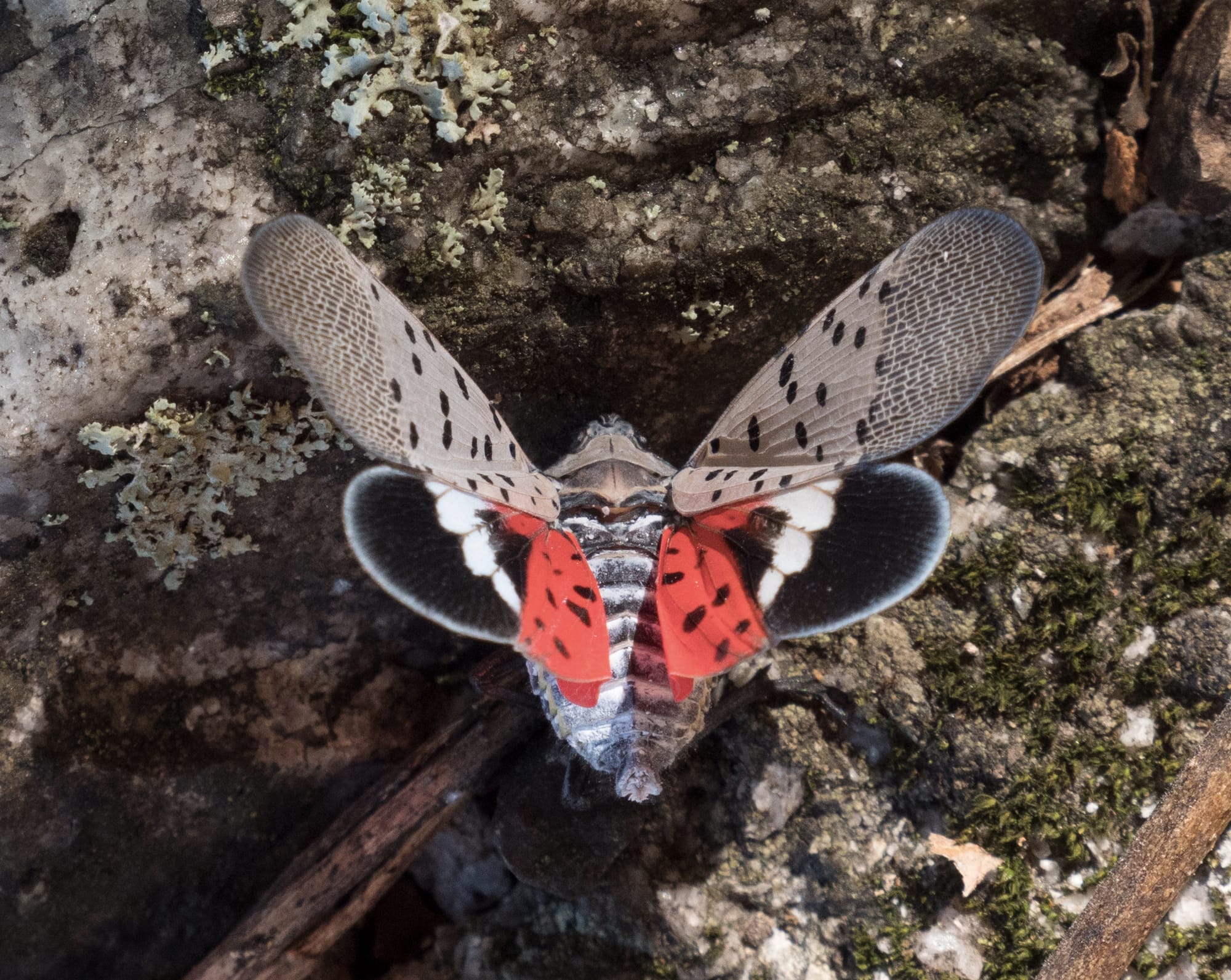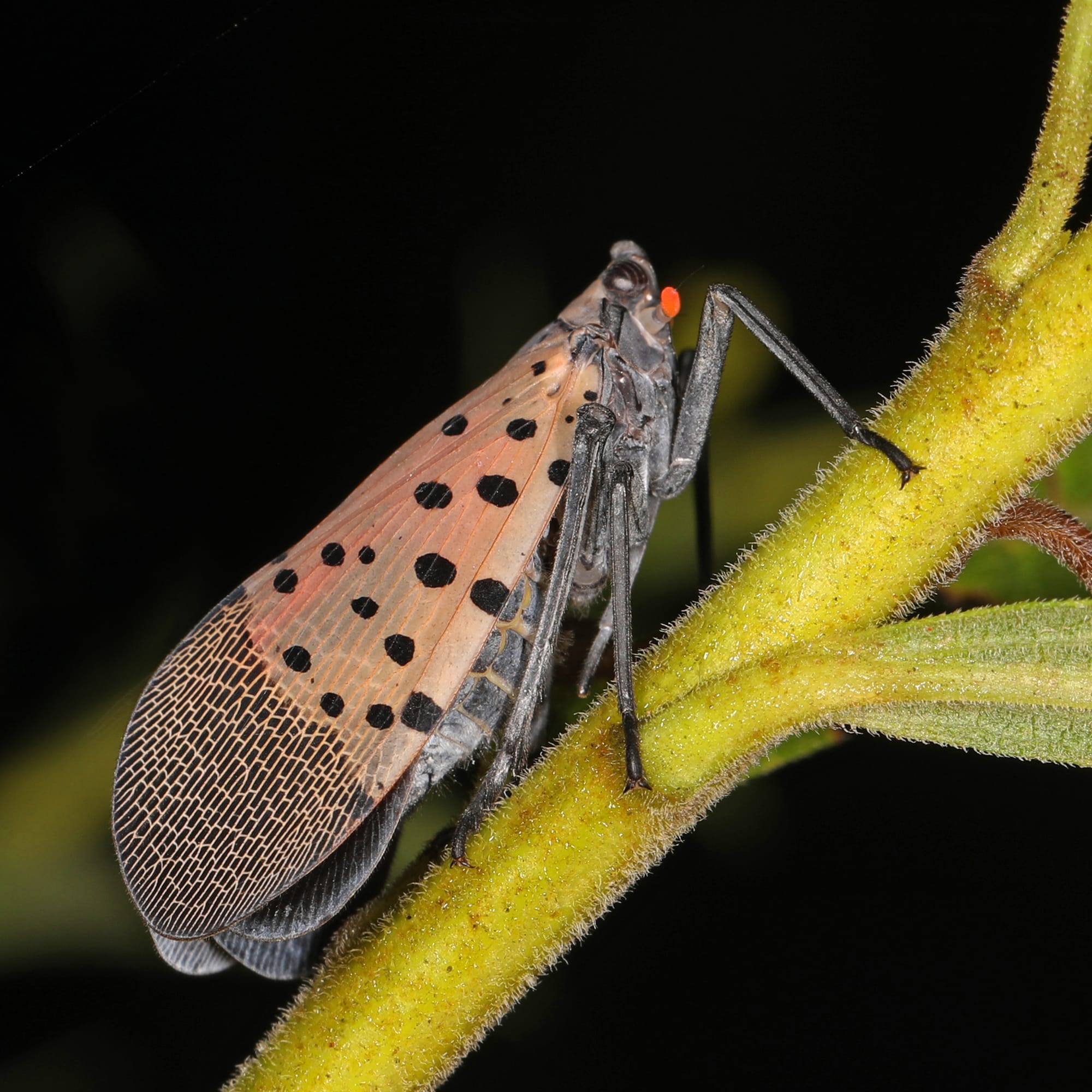Invasive Lanternfly has Been Spotted In Burlington
State agriculture officials confirm invasive pest presence, residents urged to report sightings

The Burlington Conservation Commission has confirmed an infestation of spotted lanternfly has been found in Burlington, MA.
The Massachusetts Department of Agricultural Resources (MDAR) notified local conservation officials last week about the infestation, though they decline to specify the exact location while survey teams complete their initial assessments.
What is a spotted lanternfly?
Believed to have arrived to Pennsylvania in a stone shipment in 2014, the spotted lanternfly is native to the East Asian countries of China, India, and Vietnam. It is considered an invasive species in the United States and has been spreading across the Northeast for the last decade.
Why are spotted lanternflies a problem?
The pests use their proboscis to extract sap from trees, creating a cascade of environmental problems. This feeding behavior produces a sticky substance called honeydew that coats surfaces below infested trees, including cars and walkways.
"They use their proboscis to take sap out of the trees and they end up producing this sticky stuff called honeydew, which gets all over everything," noted Conservation Administrator, Eileen Coleman. "That's part of the nuisance factor. It gets over people's cars and drips on the ground underneath the trees."
The honeydew creates additional complications by fostering fungal growth on vegetation beneath affected trees. "Sooty mold" commonly develops on the sticky residue, further damaging the ecosystem around infested areas.
Where will you find lanternflies, what do they look like, and what should you do about them?
Coleman notes that the insects are partial to vines like grapevines and hops, and that they feed on some trees, as well, like maple, black walnut, and especially the Tree of Heaven.
In September, the adults have mostly emerged after metamorphosizing from their nymph stage; they also begin to lay egg masses in the fall. Egg masses are elongated and flat and about an inch long and are often laid in protected places or on the bark of a tree (they might appear like lichens). Nymphs are black with red blotches and white spots. Adults have brown wings with black spots that open to reveal striking red-and-black wings.




Spotted lanternfly nymph (top left): Rhododendrites, CC BY-SA 4.0 https://creativecommons.org/licenses/by-sa/4.0, via Wikimedia Commons Adult spotted lanternfly with wings spread (top right) & spotted lanternfly egg mass (bottom right): U.S. Department of AgricultureLance Cheung/Multimedia PhotoJournalist/USDA Photo by Lance Cheung, Public domain, via Wikimedia Commons Adult spotted lanternfly (bottom left): By Judy Gallagher - 253/365 - Spotted Lanternfly - Lycorma delicatula, Gillis Falls Park, Woodbine, Maryland, September 10, 2023, CC BY 2.0, https://commons.wikimedia.org/w/index.php?curid=138120549
What should you do when you see a spotted lanterfly egg mass, nymph, or adult? In the absence of natural predators, the best way to control the insect is to kill it on sight. Unlike many insect control situations, this is a situation where Conservation officials give residents explicit permission to kill an insect.
"Please report them to MDAR so they know where they are, but you can also feel free to go ahead and squish them," the conservation official advised. "You can also put them into a bag with something like hand sanitizer, alcohol, something like that." To report a sighting, upload a photo to the MDAR website.
Learn more about the spotted lanternfly
MDAR has produced a series of video resources for residents to recognize and understand lanternflies and prevent them from hitching a ride on their vehicle, which is one way the insects spread.
Surveyors from MDAR will be in town to try and determine how widespread the spotted lanternfly problem is in Burlington, and the Conservation Commission will share more information as it becomes available.





